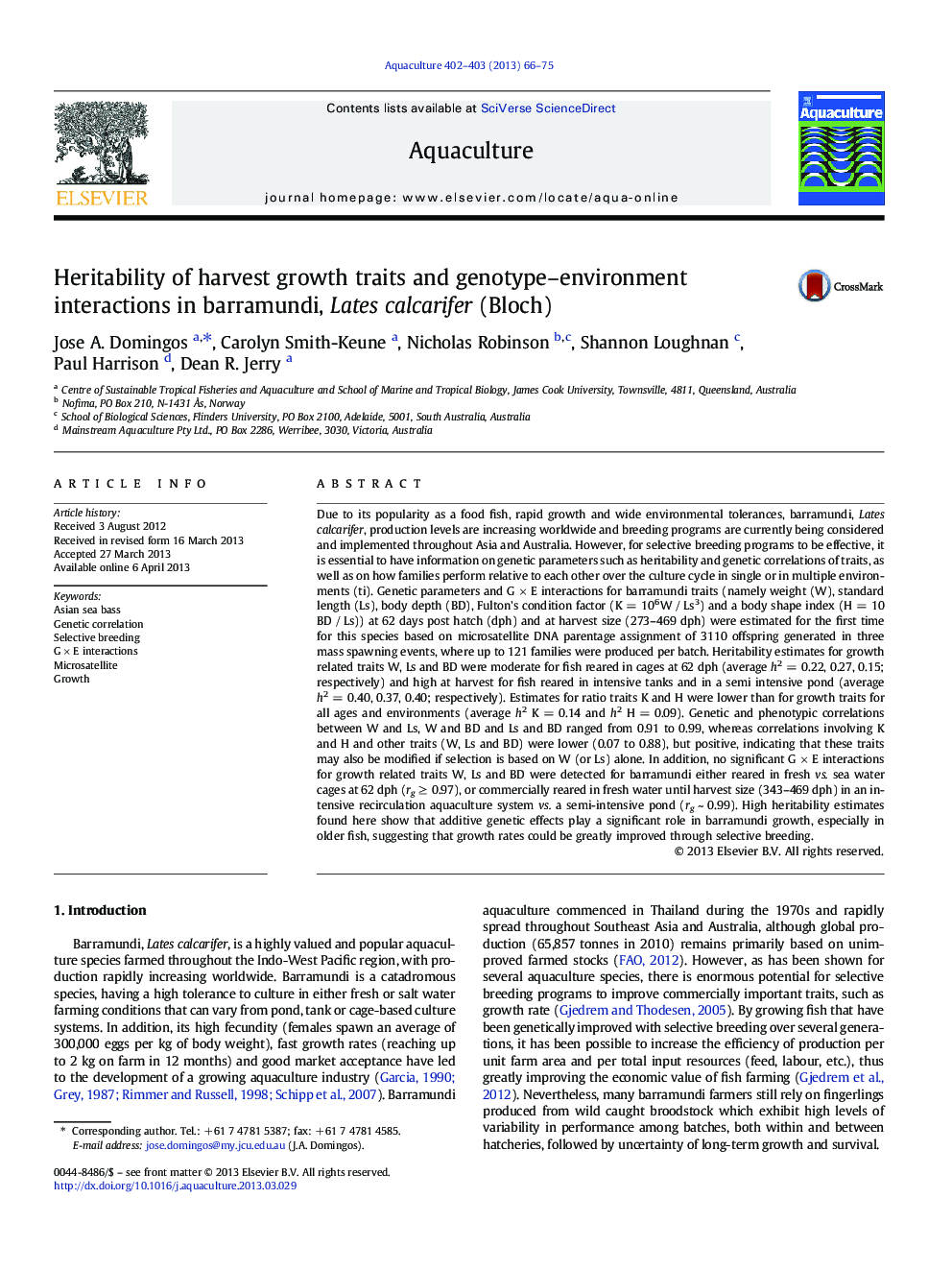| کد مقاله | کد نشریه | سال انتشار | مقاله انگلیسی | نسخه تمام متن |
|---|---|---|---|---|
| 2422109 | 1552872 | 2013 | 10 صفحه PDF | دانلود رایگان |

• High heritability estimates were found for barramundi growth traits at harvest.
• Barramundi growth rates could be greatly improved through selective breeding.
• No G × E was found in either pond vs. tank or fresh vs. sea water environments.
Due to its popularity as a food fish, rapid growth and wide environmental tolerances, barramundi, Lates calcarifer, production levels are increasing worldwide and breeding programs are currently being considered and implemented throughout Asia and Australia. However, for selective breeding programs to be effective, it is essential to have information on genetic parameters such as heritability and genetic correlations of traits, as well as on how families perform relative to each other over the culture cycle in single or in multiple environments (ti). Genetic parameters and G × E interactions for barramundi traits (namely weight (W), standard length (Ls), body depth (BD), Fulton's condition factor (K = 106W / Ls3) and a body shape index (H = 10 BD / Ls)) at 62 days post hatch (dph) and at harvest size (273–469 dph) were estimated for the first time for this species based on microsatellite DNA parentage assignment of 3110 offspring generated in three mass spawning events, where up to 121 families were produced per batch. Heritability estimates for growth related traits W, Ls and BD were moderate for fish reared in cages at 62 dph (average h2 = 0.22, 0.27, 0.15; respectively) and high at harvest for fish reared in intensive tanks and in a semi intensive pond (average h2 = 0.40, 0.37, 0.40; respectively). Estimates for ratio traits K and H were lower than for growth traits for all ages and environments (average h2 K = 0.14 and h2 H = 0.09). Genetic and phenotypic correlations between W and Ls, W and BD and Ls and BD ranged from 0.91 to 0.99, whereas correlations involving K and H and other traits (W, Ls and BD) were lower (0.07 to 0.88), but positive, indicating that these traits may also be modified if selection is based on W (or Ls) alone. In addition, no significant G × E interactions for growth related traits W, Ls and BD were detected for barramundi either reared in fresh vs. sea water cages at 62 dph (rg ≥ 0.97), or commercially reared in fresh water until harvest size (343–469 dph) in an intensive recirculation aquaculture system vs. a semi-intensive pond (rg ~ 0.99). High heritability estimates found here show that additive genetic effects play a significant role in barramundi growth, especially in older fish, suggesting that growth rates could be greatly improved through selective breeding.
Journal: Aquaculture - Volumes 402–403, 15 July 2013, Pages 66–75